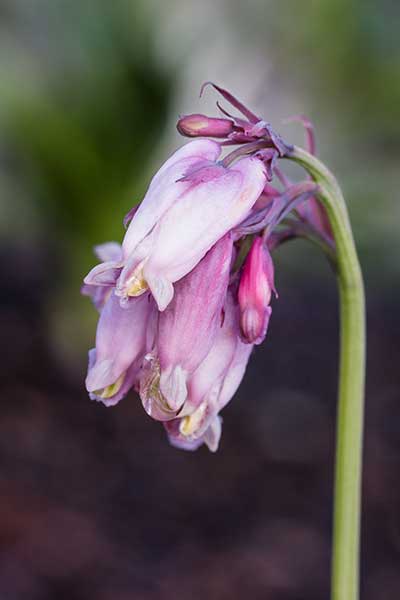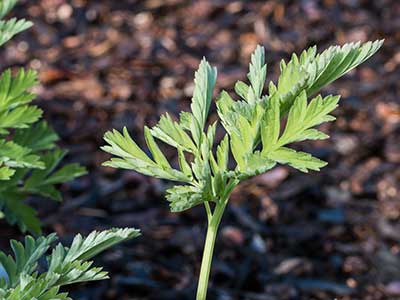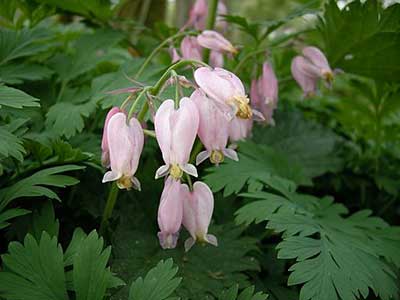Western Bleeding Heart
- Scientific Name: Dicentra formosa
- Garden: Wildlife Garden
- Plant Type: Herbaceous Perennial
- Evergreen/Deciduous: Deciduous
- Sun/Shade Exposure: Shade
- Moisture Requirements: Moist, Well-Drained
Plant Information
Bleeding hearts are a long standing, popular staple in the shade garden. Old-fashioned bleeding heart, Dicentra spectabalis, has been cultivated in gardens since the 1840's and still reigns as the most widely grown of all the Dicentra. This rich display of floral jewels is followed by the droplet blooms of our native D. formosa and the east coast native D. eximia. These two species readily cross pollinate and have given rise to many garden hybrids. The delicate feathery foliage of the American native species is close to the ground and adds great contrast to the bold leaves of hostas, wild ginger or grasses. Dicentra spectabalis combines well with just about anything. Because D. spectabalis goes dormant in summer, it often combines well with late blooming or evergreen perennials such as Ligularia, Astilbe or Farfugium. The less common D. scandens is a vining species with clusters of bright yellow flowers from late summer through fall. It is a wonderful plant to thread through flowering currants, Japanese Maples or train on a trellis. A newer series of hybrid Dicentra called the Amore series offer stunning, fern like foliage on vigorous plants. Prolific clusters of large rose or pink from May to August! The Amore Dicentra have largely replaced the more difficult Heart series. They prefer to be evenly moist, but not wet during the growing season. Since these plants have attractive foliage and extended bloom time they are ideal for entry ways and prominent woodland paths or containers. No matter which species of Dicentra you choose to grow, most are easy and low maintenance. They can add a sense of elegance or woodland wonder to virtually any shade garden. Even the fairies will approve. Culture: Dicentras are deciduous perennials that thrive in rich, well-drained soil in full to partial shade and regular water in the summer months. Maintenance: Very easy, low-maintenance plants. Cool soil will help the foliage last longer. Once the leaves turn yellow, cut stems to the ground in summer (for D. spectabalis) or fall (for other species). Some varieties spread by runners or reseed. Additional qualities: Attracts hummingbirds, deer resistant, good cut flower. Pest and Disease: Powdery mildew, aphids, slugs and snails.
Data Source
https://www.portlandnursery.comPlant Photos









